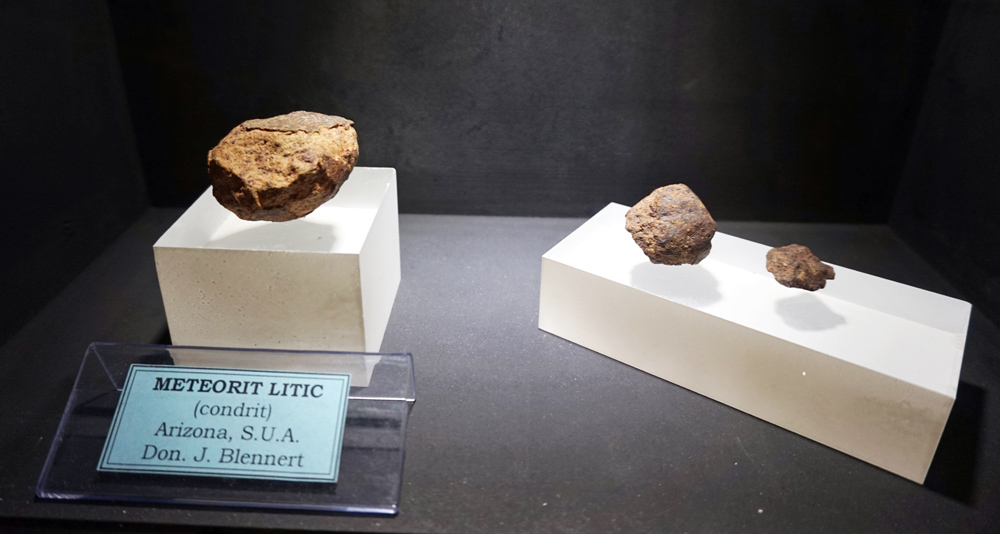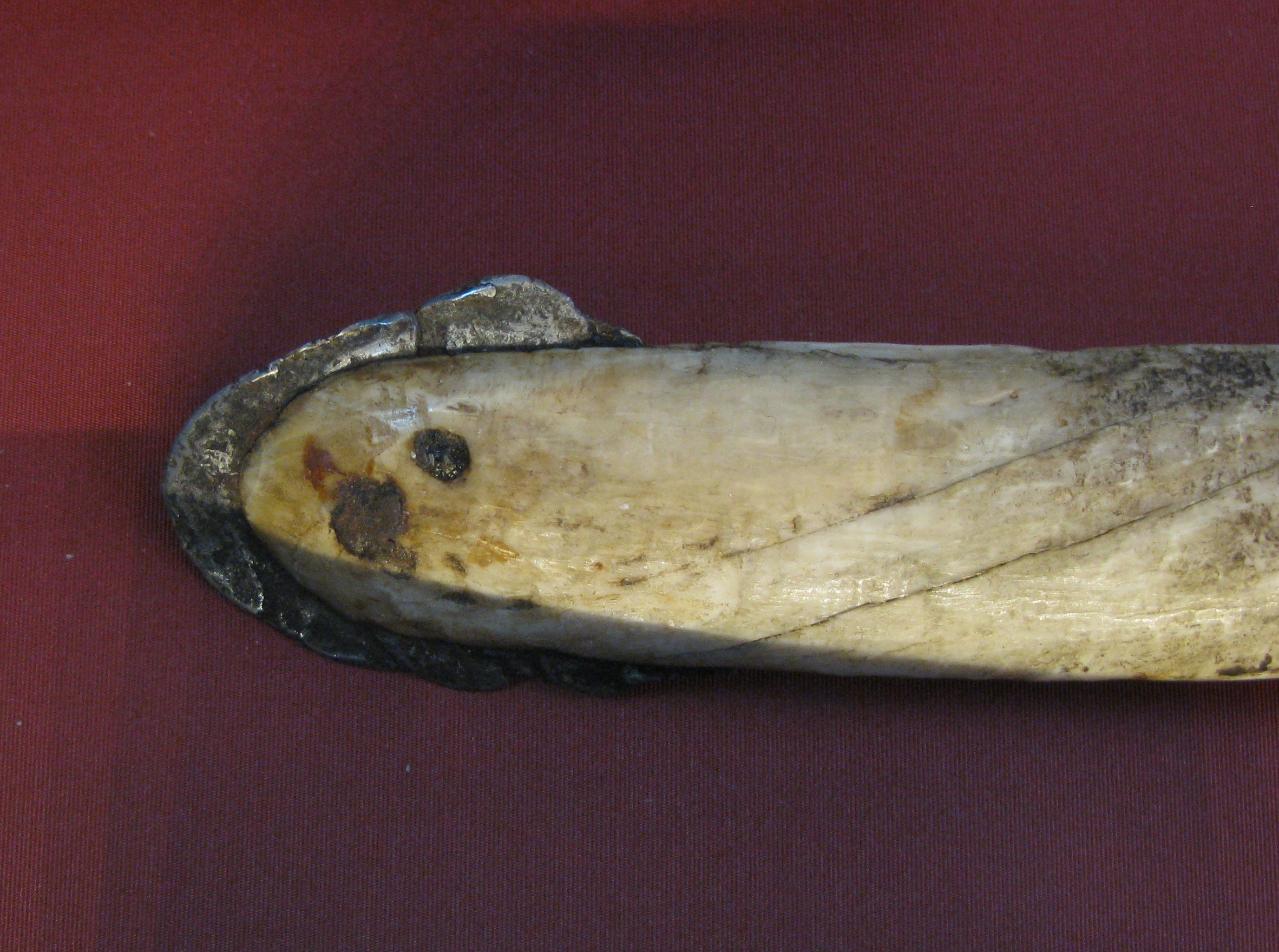|
Acapulcoite
Acapulcoites are a group of the primitive achondrite class of stony meteorites. Naming and history The acapulcoites are named after the only specimen of the group, with a witnessed fall. The Acapulca meteorite fell on 11 August 1976 at 11:00 near El Quemado Colony (), outside Acapulco, Guerrero, Mexico. It had a mass of . The stone was retrieved 15 minutes afterwards from a deep crater and was cool to the touch. Following that discovery, 52 meteorite specimens have been classified as acapulcoites. Chemical composition Acapulcoites are primarily composed of olivine, orthopyroxene, plagioclase, meteoric iron, and troilite. Like all primitive achondrites, acapulcoites have chemical composition and mineralogical similarities with chondrites, some specimen even show relic chondrules. Their mineral composition lies between H and E chondrites. See also * Glossary of meteoritics This is a glossary of terms used in meteoritics, the science of meteorites. # * 2 Pallas – an aste ... [...More Info...] [...Related Items...] OR: [Wikipedia] [Google] [Baidu] |
Primitive Achondrite
Primitive achondrites are a subdivision of meteorites. They are classified on the same rank (historically called "Class") and lying between chondrites and achondrites. They are called primitive because they are achondrites that have retained much of their original chondritic properties. Very characteristic are relic chondrules and chemical compositions close to the composition of chondrites. These observations are explained as melt residues, partial melting, or extensive recrystallization. History The concept of primitive achondrites was first summarized in 1983. In 2006 a classification was published that assigned 7 groups to the primitive achondrites, but the classification remains controversial. The authors define primitive achondrites as meteorites "''that exceeded their solidus temperature on the parent body''" and thus would partially melt. Meteorites that have been fully melted are included if they did not reach isotopic equilibrium on their parent body. Description There ... [...More Info...] [...Related Items...] OR: [Wikipedia] [Google] [Baidu] |
Achondrite
An achondrite is a stony meteorite that does not contain chondrules. It consists of material similar to terrestrial basalts or plutonic rocks and has been differentiated and reprocessed to a lesser or greater degree due to melting and recrystallization on or within meteorite parent bodies. As a result, achondrites have distinct textures and mineralogies indicative of igneous processes. Achondrites account for about 8% of meteorites overall, and the majority (about two-thirds) of them are HED meteorites, possibly originating from the crust of asteroid 4 Vesta. Other types include Martian, Lunar, and several types thought to originate from as-yet unidentified asteroids. These groups have been determined on the basis of e.g. the Fe/ Mn chemical ratio and the 17O/18O oxygen isotope ratios, thought to be characteristic "fingerprints" for each parent body. Classification Achondrites are classified into the following groups:O. Richard Norton. The Cambridge encyclopedia of meteorit ... [...More Info...] [...Related Items...] OR: [Wikipedia] [Google] [Baidu] |
Stony Meteorite
In meteoritics, a meteorite classification system attempts to group similar meteorites and allows scientists to communicate with a standardized terminology when discussing them. Meteorites are classified according to a variety of characteristics, especially mineralogical, petrological, chemical, and isotopic properties. Terminology There is no single, standardized terminology used in meteorite classification; however, commonly used terms for categories include ''types'', ''classes'', ''clans'', ''groups'', and ''subgroups''. Some researchers hierarchize these terms, but there is no consensus as to which hierarchy is most appropriate. Meteorites that do not fit any known group (though they may fit somewhere within a higher level of classification) are ''ungrouped''. Genetic relationships Meteorite classification may indicate that a "genetic" relationship exists between similar meteorite specimens. Similarly classified meteorites may share a common origin, and therefore may come ... [...More Info...] [...Related Items...] OR: [Wikipedia] [Google] [Baidu] |
Glossary Of Meteoritics
This is a glossary of terms used in meteoritics, the science of meteorites. # * 2 Pallas – an asteroid from the asteroid belt and one of the likely parent bodies of the CR meteorites. * 4 Vesta – second-largest asteroid in the asteroid belt and likely source of the HED meteorites. * 221 Eos – an asteroid from the asteroid belt and one of the likely parent bodies of the CO meteorites. * 289 Nenetta – an asteroid from the asteroid belt and one of the likely parent bodies of the angrites. * 3103 Eger – an asteroid from the asteroid belt and one of the likely parent bodies of the aubrites. * 3819 Robinson – an asteroid from the asteroid belt and one of the likely parent bodies of the angrites. * IA meteorite – an iron meteorite group now part of the IAB group/complex. * IAB meteorite – an iron meteorite and primitive achondrite of the IAB group/complex. * IB meteorite – an iron meteorite group now part of the IAB group/complex. * IC meteorite – ... [...More Info...] [...Related Items...] OR: [Wikipedia] [Google] [Baidu] |
Meteoric Iron
Meteoric iron, sometimes meteoritic iron, is a native metal and early-universe protoplanetary-disk remnant found in meteorites and made from the elements iron and nickel, mainly in the form of the mineral phases kamacite and taenite. Meteoric iron makes up the bulk of iron meteorites but is also found in other meteorites. Apart from minor amounts of telluric iron, meteoric iron is the only naturally occurring native metal of the element iron (in metallic form rather than in an ore) on the Earth's surface. Mineralogy The bulk of meteoric iron consists of taenite and kamacite. Taenite is a face-centered cubic and kamacite a body-centered cubic iron-nickel alloy. Meteoric iron can be distinguished from telluric iron by its microstructure and perhaps by its chemical composition also, since meteoritic iron contains more nickel and less carbon. Trace amounts of gallium and germanium in meteoric iron can be used to distinguish different meteorite types. The meteoric iron in sto ... [...More Info...] [...Related Items...] OR: [Wikipedia] [Google] [Baidu] |
Troilite
Troilite is a rare iron sulfide mineral with the simple formula of FeS. It is the iron-rich endmember of the pyrrhotite group. Pyrrhotite has the formula Fe(1-x)S (x = 0 to 0.2) which is iron deficient. As troilite lacks the iron deficiency which gives pyrrhotite its characteristic magnetism, troilite is non-magnetic. Troilite can be found as a native mineral on Earth but is more abundant in meteorites, in particular, those originating from the Moon and Mars. It is among the minerals found in samples of the meteorite that struck Russia in Chelyabinsk on February 15th, 2013. Uniform presence of troilite on the Moon and possibly on Mars has been confirmed by the Apollo, Viking and Phobos space probes. The relative intensities of isotopes of sulfur are rather constant in meteorites as compared to the Earth minerals, and therefore troilite from Canyon Diablo meteorite is chosen as the international sulfur isotope ratio standard, the Canyon Diablo Troilite (CDT). Structure Troil ... [...More Info...] [...Related Items...] OR: [Wikipedia] [Google] [Baidu] |
Plagioclase
Plagioclase is a series of tectosilicate (framework silicate) minerals within the feldspar group. Rather than referring to a particular mineral with a specific chemical composition, plagioclase is a continuous solid solution series, more properly known as the plagioclase feldspar series. This was first shown by the German mineralogist Johann Friedrich Christian Hessel (1796–1872) in 1826. The series ranges from albite to anorthite endmembers (with respective compositions NaAlSi3O8 to CaAl2Si2O8), where sodium and calcium atoms can substitute for each other in the mineral's crystal lattice structure. Plagioclase in hand samples is often identified by its polysynthetic crystal twinning or 'record-groove' effect. Plagioclase is a major constituent mineral in the Earth's crust, and is consequently an important diagnostic tool in petrology for identifying the composition, origin and evolution of igneous rocks. Plagioclase is also a major constituent of rock in the hi ... [...More Info...] [...Related Items...] OR: [Wikipedia] [Google] [Baidu] |
Orthopyroxene
The pyroxenes (commonly abbreviated to ''Px'') are a group of important rock-forming inosilicate minerals found in many igneous and metamorphic rocks. Pyroxenes have the general formula , where X represents calcium (Ca), sodium (Na), iron (Fe II) or magnesium (Mg) and more rarely zinc, manganese or lithium, and Y represents ions of smaller size, such as chromium (Cr), aluminium (Al), magnesium (Mg), cobalt (Co), manganese (Mn), scandium (Sc), titanium (Ti), vanadium (V) or even iron (Fe II) or (Fe III). Although aluminium substitutes extensively for silicon in silicates such as feldspars and amphiboles, the substitution occurs only to a limited extent in most pyroxenes. They share a common structure consisting of single chains of silica tetrahedra. Pyroxenes that crystallize in the monoclinic system are known as clinopyroxenes and those that crystallize in the orthorhombic system are known as orthopyroxenes. The name ''pyroxene'' is derived from the Ancient Greek words for 'fire' ( ... [...More Info...] [...Related Items...] OR: [Wikipedia] [Google] [Baidu] |
Olivine
The mineral olivine () is a magnesium iron silicate with the chemical formula . It is a type of nesosilicate or orthosilicate. The primary component of the Earth's upper mantle, it is a common mineral in Earth's subsurface, but weathers quickly on the surface. For this reason, olivine has been proposed as a good candidate for accelerated weathering to sequester carbon dioxide from the Earth's oceans and atmosphere, as part of climate change mitigation. Olivine also has many other historical uses, such as the gemstone peridot (or chrysolite), as well as industrial applications like metalworking processes. The ratio of magnesium to iron varies between the two endmembers of the solid solution series: forsterite (Mg-endmember: ) and fayalite (Fe-endmember: ). Compositions of olivine are commonly expressed as molar percentages of forsterite (Fo) and fayalite (Fa) (''e.g.'', Fo70Fa30). Forsterite's melting temperature is unusually high at atmospheric pressure, almost , whi ... [...More Info...] [...Related Items...] OR: [Wikipedia] [Google] [Baidu] |
El Quemado Colony
EL, El or el may refer to: Religion * El (deity), a Semitic word for "God" People * EL (rapper) (born 1983), stage name of Elorm Adablah, a Ghanaian rapper and sound engineer * El DeBarge, music artist * El Franco Lee (1949–2016), American politician * Ephrat Livni (born 1972), American street artist Arts, entertainment, and media Fictional entities * El, a character from the manga series ''Shugo Chara!'' by Peach-Pit * El, short for Eleven, a fictional character in the TV series ''Stranger Things'' * El, family name of Kal-El (Superman) and his father Jor-El in '' Superman'' *E.L. Faldt, character in the road comedy film ''Road Trip'' Literature * ''Él'', 1926 autobiographical novel by Mercedes Pinto * ''Él'' (visual novel), a 2000 Japanese adult visual novel Music * Él Records, an independent record label from the UK founded by Mike Alway * ''Él'' (Lucero album), a 1982 album by Lucero * "Él", Spanish song by Rubén Blades from ''Caminando'' (album) * "Él" (L ... [...More Info...] [...Related Items...] OR: [Wikipedia] [Google] [Baidu] |
Acapulco
Acapulco de Juárez (), commonly called Acapulco ( , also , nah, Acapolco), is a city and major seaport in the state of Guerrero on the Pacific Coast of Mexico, south of Mexico City. Acapulco is located on a deep, semicircular bay and has been a port since the early colonial period of Mexico's history. It is a port of call for shipping and cruise lines running between Panama and San Francisco, California, United States. The city of Acapulco is the largest in the state, far larger than the state capital Chilpancingo. Acapulco is also Mexico's largest beach and balneario resort city. Acapulco de Juárez is the municipal seat of the municipality of Acapulco. The city is one of Mexico's oldest beach resorts, coming into prominence in the 1940s through the 1960s as a getaway for Hollywood stars and millionaires. Acapulco was once a popular tourist resort, but due to a massive upsurge in gang violence and homicide numbers since 2014, Acapulco no longer attracts many foreign ... [...More Info...] [...Related Items...] OR: [Wikipedia] [Google] [Baidu] |





